[Seasonal Harmony]
It’s Summer
Ellasara Kling
We have now entered into Early Summer whose emotion is Joy! We are all happy to have left the cold of winter and the windy storms of spring behind, to shed our overcoats and feel the sun shining on us. The setting of Early Summer, with flowers and foods coming forth in an array of color, blue skies, sunshine, green leaves, and more all add to an uplifted feeling. Even anticipation of summer is invigorating! However, the healthy Joy of summer is an internal joy that is not explosive but rather flows from a harmonious heart.
In order to have harmony in our lives, the elements that create harmony must be present as harmony is the result of an overall effect of the interrelationship of smaller parts. The harmony that is present at any moment is the reflection of how the pieces come together in a combination that says, in part, there is balance here, there is peacefulness here, there is purposefulness, there is unity here, there is centeredness here, there is Life here. We recognize Harmony through the presence of a pleasant appeal to who we are. The achievement of Harmony in our lives or an endeavor, such as the preparation of a meal, becomes a tacit invitation to all to partake of something uplifting and encouraging to be ever more integrated.
The Fire element of this season is seen in such things as people’s passion, strength, and courage when in balance, while an over excitable expression or its seemingly opposite, depression when not in balance. When the heart’s energy is balanced, the result is the ability to think clearly, remember well, and sleep well.
The tongue, which is the outer organ of the Heart/Small Intestine system, is used in Chinese medicine as an important diagnostic tool. By examining the tongue, one’s state of health can be quickly assessed. The tip of the tongue reflects the state of health, both physical and emotional as it relates to the heart and fire element. (For more information on tongue diagnostics: http://www.shen-nong.com/eng/exam/exam_diagnostic_inspection.html).
Among the various “dangers” of this season, is Summer Heat, which is one of the six external pathogenic forces (cold/wind/damp/dryness/fire/summer heat). This particular heat only exists in the summer season. It has to do with an overabundance of Yang Heat and some of its symptoms include high fever, red face, abundant sweating (not from physical exertion), intense listlessness, nausea. It is important in summer to eat cooling foods, drink fluids that are not ice cold, dress appropriately. In hot weather it is advisable to eat lightly, drinking teas such as Chrysanthemum tea and eat foods such as mung beans both of which help wick away heat.
I’ve been told that the direction of South for the heart came about because the Heart is considered the King/Monarch of the organ systems, and that the Emperor always faced south at important events.
Some General Guidelines for Healthy Eating
Eat foods that are natural to the season in the area where you live.
As much as possible eat “local” foods.
Try to have each of the five tastes throughout your day, if not at each meal.
Avoid late meals for better digestion.
Avoid heavily processed and/or greasy foods.
Avoid cold liquids and foods – the stomach likes warm foods.
Eat primarily cooked foods – overeating raw foods can impair digestion and create dampness.
Choose a pleasant place to eat.
Eat slowly – chew your food carefully.
Don’t eat and work at the same time.
A simple meal eaten in a calm environment is better than an “exotic” meal eaten in distraction.
Eat until 70% full.
Eat a quality breakfast, a large lunch, and a light dinner.
Avoid nomadic eating – sit down rather than eating while walking/driving/standing.
Listen to your body – learn to follow your intuition.
Some Foods That Are Harmonious With Early Summer Include: apricot, beet, bitter melon, black coffee, broccoli, celery, coffee, cucumber, dark unsweetened chocolate, escarole, ginger, job’s tears, lettuces such as Boston, chicory, endive & romaine, lemon balm, loquat, lotus root, lotus seed, mulberries, mung bean, okra, peach, peppermint, persimmons, pumpkin, radishes, red lentils, red peppers, red plums, rhubarb, soy beans, spinach, strawberry, summer squashes, tamarind, teas, tomato, water chestnuts, watermelon, Chinese yam, zucchini, and others.
RECIPES
Ingredients:
½ cup water 4 cups of watermelon (include some of the rind) 2 TB fresh ginger root tiny pinch of saltDirections:
Place all of the ingredients in a blender and juice. You can add more water if you like to make it more “liquid,” but do not add ice. The addition of a tiny pinch of salt will enhance the sweetness of the watermelon. This is so refreshing and delightful on hot days. Watermelon can also aid in balancing weight.
Escarole and White Bean Soup
Ingredients:
2 large bunches of escarole 3 Tb walnut or grapeseed oil 2 cloves of garlic – sliced lengthwise 2 thin slices of ginger 5 thin scallion whites sliced finely Salt & pepper 3 cups water 1 15 oz. can of small white beans (cannellini, navy, small white) or your own cooked beans ½ lemonDirections:
Carefully wash the escarole in cold water and drain. Cut the escarole in horizontal ribbons about 1-1/2” wide. Heat your wok/heavy skillet and add the oil and heat it. Add the garlic, ginger, scallions and sauté for a couple of minutes until begin to sweat. Add Salt and Pepper.
Add the escarole and toss with the garlic/ginger/scallions.
Add the water and cover and let simmer on medium heat for about 5 minutes.
Add the beans, toss through the escarole, adjust liquid.
Heat through and add the juice of the lemon right before serving.
The slightly bitter taste of the escarole acts as an anti-inflammatory, and can help to reduce dampness. The bland flavor of the beans and the tart lemon juice balance the bitter of the flavor.
Baked Eggs and Greens
Ingredients:
1 cup dill leaves 1 cup flat parsley leaves or cilantro leaves 1 cup celery leaves (using the outer and the inner leaves) ½ cup finely chopped scallion whites with just a bit of the light green ¼ cup mint leaves 1 cup lightly toasted walnuts 6 large eggs 2-3 Tb cold water 1 Tb turmeric ½ Tb salt (or less) ½ Tb fresh ground pepper (or less) 1-1/2 Tb baking powder (aluminum free – preferably) 9” pie dish or 9 x 12 baking dish Parchment paper to line Oil to lightly coat parchment paper (if no parchment paper, coat well the bottom of pan w/oil) Lemon wedgesDirections:
Heat oven to 400 degrees. Carefully pick the LEAVES ONLY off the dill, parsley and celery and mint NO STALKS! Chop roughly set aside in a bowl. Put the walnuts in a plastic bag and crush them with a rolling pin or heavy jar (honey jar, e.g.).
The walnuts should be very small pieces and some very fine, a mixture of textures. Add to the leaves.
Lightly beat together the eggs, salt;/pepper, turmeric and cold water.
Prepare the baking dish: line with parchment paper.
Stir the baking powder into the eggs and immediately add the leaves and nut mixture to the egg white and mix together.
Pour into the baking dish* and put in the oven. Bake at 400 for about 30-45 minutes.
Serve with lemon wedges.
Whole eggs are said to bring harmony to the organ functions, calm the mind, clear away excessive heat, and can aid in alleviating long term dry coughs among many other things.
Ingredients:
Two cups grated or julienne beets – easiest to cut this way after cooked 1 quart water 1 bay leaf A pinch sea salt Cucumber slices (cool) optional A few sprigs of dill (disperses qi) optionalDirections:
Cook the beets in the water with the bay leaf and salt until the beets are tender. Decorate with cucumber slices and a little dill. Beets relieve Liver stagnation; promote circulation, support Heart function. This soup is also very refreshing on a hot day.
Mung Beans and Chinese Chives With Yellow Flowers
Ingredients:
4 cups uncooked mung bean sprouts 2 cups yellow flowered Chinese Chives 2 eggs, lightly beaten 1/4 teaspoon salt ¼ cup oil for stir-frying 1-1/2 Tb minced fresh ginger 2 teaspoons soy sauce 1/2 teaspoon sugarDirections:
Wash and drain the mung bean sprouts and chives. Cut the chives into 4” pieces. In a small bowl, lightly beat the eggs with the salt. Heat a wok or heavy skillet and coat bottom with 1-1/2 TB oil. Add the eggs and so that they cover the bottom of the pan like a pancake. Turn them over gently and the cut into thin strips and set aside on a platter.
Add 2 Tb oil and add the minced ginger when the oil is hot.
Add the mung bean sprouts and stir-fry for about 1 minute then add the rest of the ingredients. Stir-fry for about another 1 – 2 minutes, until the chives just begin to be limp
Transfer to a platter and top with the strips of egg.
Chives are an aid to digestion, blood circulation and have antiseptic properties. Mung beans sprouts are cooling, can clear toxins, and improve circulation in the 12 major meridians.
Wishing you good health! Remember to smile from the heart at all things.
The information in this article is based on the theories and principles of Chinese Medicine.
Ellasara Kling – The information in this article is based on the theories and principles of Chinese Medicine. Ellasara has been studying with Master and Dr. Nan Lu for many years and has participated in special classes through TCM World Foundation and the Tao of Healing in New York City. For comments, questions, consultations, ellasara00@gmail.com.

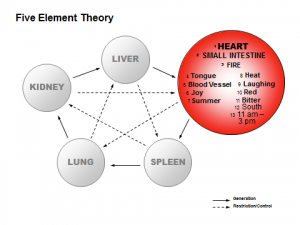
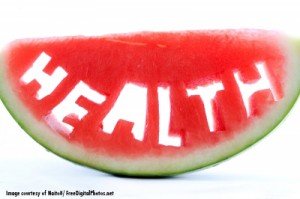
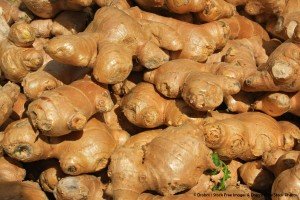
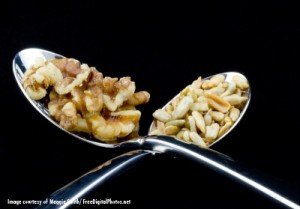
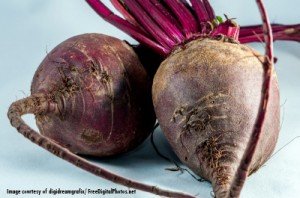

Pingback: Harmony With Nature: Healing Rhythms | Yang-Sheng